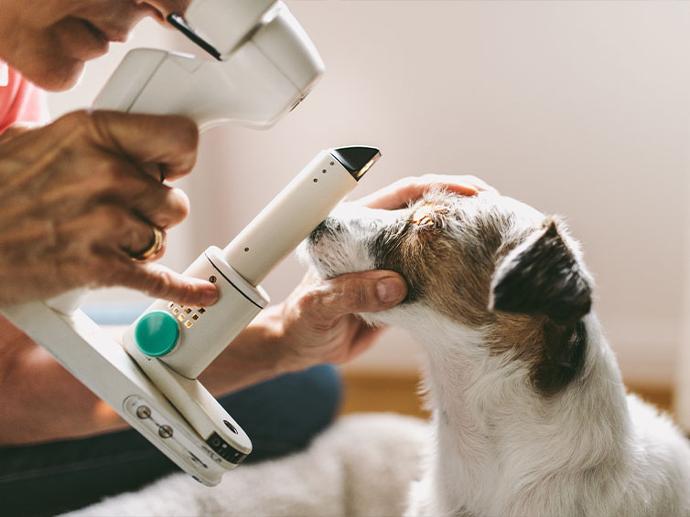Have you ever caught your furry friend glued to the TV, tail wagging at the sight of a bounding deer or the animated escapades of Scooby Doo? It turns out, understanding Fido's viewing preferences might do more than just qualify them as the ideal Netflix partner.
Researchers at the University of Wisconsin–Madison's School of Veterinary Medicine are tuning into canine TV habits to crack a crucial challenge in veterinary care: accurately assessing a dog's vision.

Freya Mowat, a veterinary ophthalmologist, spearheaded a study aiming to decode the types of video content that captivate dogs. The ultimate goal? To create a doggy version of an eye chart, paving the way for more nuanced vision assessments in veterinary practices. Traditional methods only tell us if a dog can see or not, a stark contrast to the detailed evaluations we humans undergo. It's high time for a change.
What's on dog TV?
Published in the journal Applied Animal Behaviour Science, Mowat's study reveals that dogs are particularly drawn to content featuring fellow animals, with their canine kin topping the charts. So, while a documentary on canine evolution might pique their interest, don't be surprised if they're equally enthralled by the mystery-solving adventures of a certain Great Dane.

The research involved a global survey asking dog owners about their pets' screen time, from the types of content that grab their attention to their behavioral reactions. Are they passive viewers, lying down as the drama unfolds, or active participants, barking and jumping at every twist and turn? The study also tested specific video clips to gauge direct reactions, from wildlife to urban scenes.
Key findings:
- Dogs' engagement with screens correlates with their age and vision clarity.
- Sporting and herding breeds seem to enjoy TV time more than their peers.
- Our furry friends prefer watching other animals, especially dogs, over human-focused content, ranking humans a distant ninth in appeal.
- Cartoons captivate over 10% of the canine audience, hinting at a universal appeal of animated antics.
- Movement is a major draw, keeping dogs fixated on the screen.

Video-based tools for canine visual assessment
The insights from Mowat's study lay the groundwork for developing video-based tools to monitor how dogs' visual attention shifts with age. Such tools could vastly improve our understanding of vision-related quality of life in aging dogs, ensuring our pets enjoy their golden years with the clarity they deserve.
A canine canary in the coal mine?
Mowat also explores the potential of using our dogs as early detectors for environmental or lifestyle factors affecting vision. Given their shorter lifespans, dogs might manifest signs of visual aging long before humans do, serving as a furry alert system for their two-legged companions.

As we dive deeper into the visual world of dogs, we edge closer to innovations that promise not just enhanced veterinary care but also insights into our own visual health. Stay tuned as we continue to explore the fascinating intersection of animal behavior, veterinary technology, and science.
For veterinary clinics striving to offer the latest and most compassionate care, incorporating advanced diagnostics and treatment options is essential. AIV Vet supports this mission with a comprehensive range of new and refurbished veterinary equipment, including veterinary fluid warmers, syringe pump, vet IV infusion pumps. Our commitment to quality and reliability ensures that clinics are equipped to meet the needs of every patient.
Source:
Knowing what dogs like to watch could help veterinarians assess their vision| University of Wisconsin-Madison | January 18, 2024